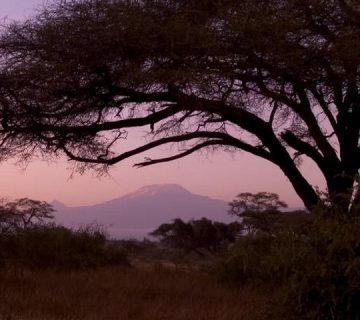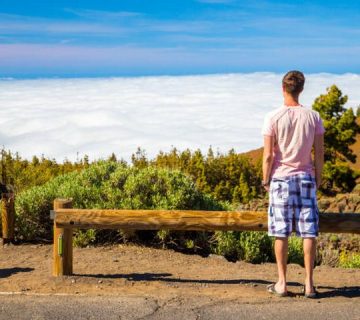Best Lenses For Landscape Photography On Kilimanjaro
Introduction: Capturing the Majestic Beauty of Kilimanjaro
Ascending the iconic Mount Kilimanjaro is a dream for many adventurers and photographers alike. Known as the "Roof of Africa," this majestic mountain offers not just challenging treks but also unparalleled opportunities for landscape photography. At Kilimanjaro Centre for Trekking and Ecotourism (KCTE), we understand the allure of capturing the perfect sunrise over Mawenzi or the dramatic clouds rolling over Shira Plateau. That’s why we’re here to guide you on selecting the best lenses for landscape photography on Kilimanjaro, ensuring you return with awe-inspiring images to match your unforgettable experience.
Choosing Your Companion: The Best Lenses for the Journey
Wide-Angle Lenses: Expansive Views
For capturing the vastness of the Kilimanjaro landscapes, a wide-angle lens is indispensable. These lenses are ideal for taking in broad vistas and expansive skies. A lens with a focal length between 16mm and 35mm will allow you to capture the enormity of the plains and the horizon as it meets the mountain base.
Recommended Pick: A 24mm f/1.4 lens provides a splendid balance of wide view and aperture, allowing for sharp, bright images even during the dim lights of dawn or dusk.
Telephoto Lenses: Detailing the Distance
Telephoto lenses are your best bet when you want to focus on distant subjects, such as wildlife on the lower slopes or climbers amidst vast landscapes. A lens with a focal length of 70-200mm can be perfect for compressing distance and adding an artistic feel to your photos by blurring out distracting backgrounds.
Recommended Pick: A 70-200mm f/2.8 lens is excellent for those clear shots of distant subjects, with a fast enough aperture to handle a variety of lighting conditions.
Prime Lenses: Unmatched Sharpness
Prime lenses are known for their wider apertures and incredible sharpness. A prime lens, such as a 50mm f/1.8, is not only lighter to carry but also excellent for capturing detailed and vibrant images of the flora and fauna or the intricate textures of Kilimanjaro’s terrain.
Recommended Pick: The 50mm f/1.8 is an affordable, sharp lens that performs well in low light, perfect for early morning or late evening shoots.
Zoom Lenses: Flexibility on the Move
Hiking Kilimanjaro means your shooting conditions can change rapidly. A good quality zoom lens offers the versatility needed to adapt to different subjects and distances without the need to swap lenses too often.
Recommended Pick: A 24-70mm f/2.8 lens covers a range of focal lengths, ideal for quick adjustments in dynamic landscapes.
Photography Tips for Kilimanjaro
Understanding Light on the Mountain
The equatorial sun can be harsh, especially above the cloud line. Early morning or late afternoon light provides softer, more colorful lighting. Utilizing a lens with a good aperture helps manage these light extremes effectively.
Composition Techniques
Use the rule of thirds to align the mountain peaks or other natural elements. Foreground interest, such as rocks or ice formations, can add depth to your photographs. A wide-angle lens helps immensely in framing these compositions.
Weather Considerations
Be prepared for quick weather changes. A weather-sealed lens is advisable, as sudden rains or mist can occur, particularly in the rainforest and moorland zones.
Gear Protection and Maintenance
When trekking, the protection of your lenses is crucial due to the dusty trails and occasional precipitation. Always carry airtight bags and use UV filters to protect the lens surface. Regularly clean your lenses with appropriate tools to avoid scratches and keep your images crystal clear.
Your Perfect Kilimanjaro Photography Tour with KCTE
At Kilimanjaro Centre for Trekking and Ecotourism (KCTE), we offer tailored photography tours that cater to both budding and seasoned photographers. Our expert guides not only know the best spots for capturing breathtaking landscapes but also understand the challenges photographers face. We ensure that your journey is equipped with the necessary amenities to keep your equipment safe and your focus steady on capturing the stunning views.
FAQ: Capturing Kilimanjaro’s Beauty
What is the best time of year for photography on Kilimanjaro?
The best times are during the dry seasons, from late June to October and from late December to early March, when the skies are clearer.
Do I need a permit to photograph on Kilimanjaro?
No special photography permits are needed for personal use. However, drones or commercial shoots require prior permission and potentially additional permits.
Can I rent photography equipment from KCTE?
Yes, KCTE offers rental services for various photography equipment, including some of the best lenses for landscape photography.
Are there photography workshops offered during the climb?
Yes, we provide workshops focused on landscape and wildlife photography, tailored to enhance your skills and help you capture the essence of Kilimanjaro.
In Conclusion: Capture the Soul of Kilimanjaro with KCTE
Embarking on a Kilimanjaro climb is exhilarating, and capturing its landscapes is capturing history—yours and the mountain’s. At Kilimanjaro Centre for Trekking and Ecotourism, we are dedicated to making your photographic journey as epic as the climb itself. With the right lenses and techniques, you’ll bring home more than just memories; you’ll bring home masterpieces. Book your climb with KCTE today, and let’s ascend to new heights together, both in adventure and in artistry.




